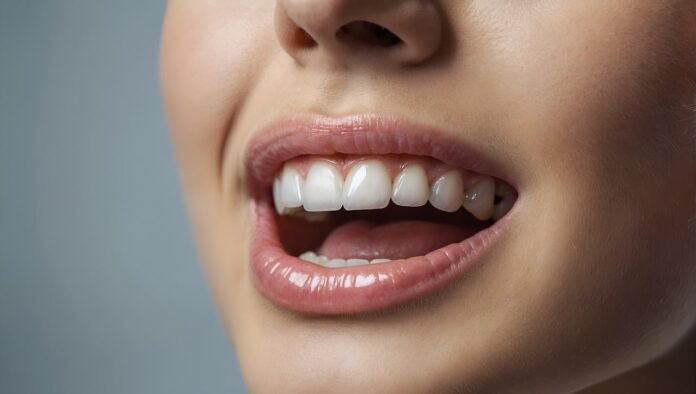Teeth whitening, also known as bleaching, involves the use of various techniques and products to lighten the color of your teeth. The primary goal is to remove stains and discoloration, which can accumulate over time due to various factors. Common culprits of tooth staining include the consumption of coffee, tea, red wine, and tobacco. Additionally, poor dental hygiene and the natural aging process can contribute to teeth losing their natural whiteness.
The process of tooth whitening can be broadly categorized into two types: professional in-office treatments and at-home whitening kits. Both methods have their benefits and limitations, and the choice often depends on individual needs, budget, and the extent of discoloration.
Why Choose Professional Tooth Whitening?
Opting for professional tooth whitening services from a reputable clinic in London, such as those offered at Marylebone Smile Clinic ensures that the procedure is carried out safely and effectively. Professional treatments typically use higher concentrations of whitening agents compared to over-the-counter products, leading to more significant and longer-lasting results. Additionally, professional treatments are supervised by experienced dental practitioners who can tailor the procedure to your specific dental needs, minimizing the risk of complications.
In-office whitening treatments often involve the application of a whitening gel that contains hydrogen peroxide or carbamide peroxide. This gel is activated using a special light or laser, which accelerates the bleaching process. The entire procedure usually takes about an hour, and patients can expect to see immediate results, making it an ideal choice for those seeking quick and dramatic improvements.
At-Home Whitening Options: Convenience and Cost-Effectiveness
For those who prefer a more convenient and cost-effective approach, at-home whitening kits offer a viable alternative. These kits typically include custom-fitted trays and whitening gels with lower concentrations of active ingredients than those used in professional treatments. While at-home kits require a longer duration to achieve noticeable results, they provide the flexibility of whitening your teeth at your own pace and in the comfort of your home.
It is crucial to follow the instructions provided with at-home whitening kits meticulously to avoid potential side effects, such as tooth sensitivity and gum irritation. Consulting with a dentist before starting any at-home whitening regimen can help you choose the most appropriate product and ensure safe usage.
Factors to Consider Before Whitening Your Teeth
Before deciding on a tooth whitening treatment, several factors should be considered to ensure the best possible outcome. First and foremost, it is essential to have a comprehensive dental examination to identify any underlying issues that may affect the whitening process. Dental problems such as cavities, gum disease, and tooth sensitivity should be addressed before undergoing any whitening procedure.
Furthermore, the effectiveness of tooth whitening can vary depending on the type and severity of discoloration. Extrinsic stains, which affect the outer surface of the teeth, are generally easier to remove with whitening treatments. In contrast, intrinsic stains, which occur within the tooth structure, may require more advanced techniques, such as veneers or crowns, to achieve the desired results.
Another crucial factor is maintaining realistic expectations. While tooth whitening can significantly enhance the appearance of your smile, it may not result in a perfect, dazzling white. The natural color of your teeth and how they respond to the whitening agents will influence the final outcome.
The Science Behind Tooth Whitening
Tooth whitening works by breaking down the molecules that cause stains and discoloration. The active ingredients in whitening gels, such as hydrogen peroxide or carbamide peroxide, penetrate the enamel and dentin layers of the teeth. These peroxides release oxygen molecules, which react with the chromogens (pigmented molecules) responsible for staining, effectively breaking them down and reducing their visibility.
The concentration of the whitening agent and the duration of exposure play a critical role in the effectiveness of the treatment. Higher concentrations and longer application times typically result in more pronounced whitening effects, but they also increase the risk of tooth sensitivity and other side effects. Therefore, it is essential to balance the desired level of whitening with the potential risks.
Managing Side Effects and Ensuring Long-Term Results
One of the most common side effects of tooth whitening is tooth sensitivity. This occurs when the whitening agents penetrate the enamel and irritate the nerve endings within the tooth. While this sensitivity is usually temporary, it can be uncomfortable and may require the use of desensitizing toothpaste or fluoride treatments to alleviate the symptoms.
Gum irritation is another potential side effect, especially if the whitening gel comes into contact with the soft tissues of the mouth. Using custom-fitted trays and carefully following the application instructions can help minimize the risk of gum irritation.
To maintain the results of your tooth whitening treatment, it is essential to adopt good oral hygiene practices and make lifestyle changes that prevent future staining. Regular brushing and flossing, along with routine dental check-ups, can help keep your teeth healthy and bright. Additionally, limiting the intake of staining substances, such as coffee, tea, and red wine, and avoiding tobacco use can prolong the effects of the whitening treatment.
Alternatives to Traditional Tooth Whitening
While traditional tooth whitening methods are effective for many people, some individuals may require alternative treatments to achieve their desired results. Dentists, for example, glue thin porcelain or composite resin shells to the front surfaces of teeth. Inherent stains can be hidden with veneers, which also give a consistent, attractive look.
Another option is dental bonding, which involves the application of a tooth-colored resin to the affected teeth. This resin is shaped and polished to match the surrounding teeth, effectively covering any stains or imperfections. Both veneers and bonding offer long-lasting results and can be customized to suit the individual’s aesthetic preferences.
The Role of Diet and Lifestyle in Tooth Discoloration
Diet and lifestyle choices play a significant role in the development of tooth discoloration. Consuming foods and beverages that are high in tannins, acids, and pigments can lead to staining and erosion of the enamel, making teeth more susceptible to discoloration. Common staining agents include coffee, tea, red wine, and certain fruits and vegetables, such as berries and tomatoes.
In addition to dietary factors, smoking and tobacco use are major contributors to tooth discoloration. The tar and nicotine in tobacco products can cause stubborn stains that are difficult to remove with standard whitening treatments. Quitting smoking and reducing the intake of staining foods and beverages can help maintain a brighter smile and improve overall oral health.
The Importance of Regular Dental Care
Maintaining regular dental care is crucial for preserving the results of your tooth whitening treatment and ensuring overall oral health. Regular dental check-ups allow your dentist to monitor the condition of your teeth and gums, identify any potential issues early on, and provide professional cleanings to remove surface stains and plaque buildup.
In addition to professional dental care, adopting a consistent oral hygiene routine at home is essential. Brushing your teeth twice a day with a fluoride toothpaste, flossing daily, and using an antiseptic mouthwash can help prevent cavities, gum disease, and tooth discoloration. Incorporating these practices into your daily routine can significantly enhance the longevity of your tooth whitening results.
Conclusion: Achieving a Radiant Smile with Professional Tooth Whitening
Tooth whitening is a safe and effective way to enhance the appearance of your smile and boost your confidence. Whether you choose a professional in-office treatment or an at-home whitening kit, it is essential to consider the various factors that can influence the outcome of the procedure. Consulting with a qualified cosmetic dentist in London can provide you with personalized advice and ensure that you achieve the best possible results.
By understanding the science behind tooth whitening, managing potential side effects, and adopting good oral hygiene practices, you can enjoy a brighter, more radiant smile for years to come. Remember, a healthy smile is not only a reflection of your overall well-being but also a key component of your personal and professional success.


























